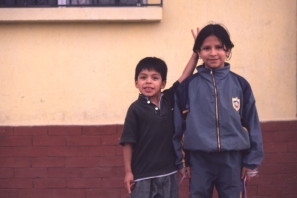Our smaller than average Catholic school has had an international focus for many years. Initial Global Awareness activities included the school celebrating different global events such as Fairtrade Fortnight. The school then wanted a more central focus on Global Learning and applied for and was granted the International Schools Award. We were invited to be a Global School of Excellence last year on the Global Learning Programme.
The school worked with the Pestalozzi project, the Council of Europe‘s training and capacity building programme for education professionals, focusing on sustainability in schools. Furthermore, we began to work on becoming a Rights Respecting School three years ago and have just achieved level 1.
Initial audit
Our Year 6 pupils (age 10 to 11) did the diamond ranking activity, focusing on Wants and Needs, based around the Rights of the Child. I found the activity a great way to provoke discussion as there are no real rights or wrongs. Pupils explored the differences between what is a want and what is a need and we took notes on the discussion this stimulated.
Pupils organised Needs cards into a diamond ranking. There was then further discussion, especially when choosing between water and education. It was very interesting to hear children reasoning through their ranking. Education won out over the other cards: pupils decided that education provides the ability to help solve all the other problems, e.g. how to find water or build wells.
Activity in-between
After doing the baseline activity, the pupils looked at the activity from the perspective of children living in Sierra Leone where we have a link school – thinking whether their wants and needs would be different and why. This led them to look at our school charter and their class charters, and what they had chosen (as a school) to be the most important articles. (Every child has the right to an education; every child has the right to be the best they possibly can; every child has the right to relax and play; every child has the right to be kept safe; every child has the right to give their opinion and be heard).
The pupils then chose the articles they thought the children in our link school had chosen and were surprised that only three of the articles they had guessed at (the right to an education, to medical care and to be kept safe) were correct. This provoked further very interesting discussion. They then compared their choices with the ones the children in our link school had in their charter, and discussed reasons for the differences. (Every child has the right to an education; every child has the right to be kept safe; every child has the right to legal representation; every child has the right to be kept safe from dangerous work and every child has the right to medical care).
We had planned to do the same activity with our link school in Sierra Leone as this would have been a natural follow on from the Rights Respecting Charter work that we had done previously with them. Unfortunately, due to the outbreak of Ebola in the country, the teachers were unable to go.
Second audit
The Wants and Needs diamond ranking activity was conducted again, this time exploring the wants and needs from the point of view of our link school. Following the discussion, the children re-ranked the wants and needs differently, having gained a different perspective on their own needs and wants and those of the young people in their link school.
I found the diamond ranking activity great for provoking discussion and enhancing teamwork. I also thought of different ways of extending the activity. After ranking the cards, the pupils can discuss whether they think the Wants and Needs cards are appropriate for everyone worldwide. Are there any important subjects/images missing, especially related to the Needs cards? If so, they can design extra cards that they think would reflect these missing areas.


